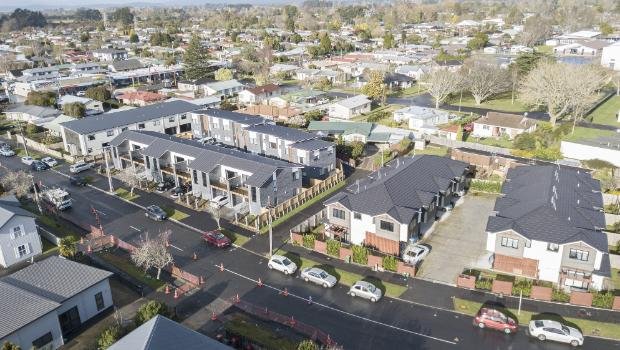Urban development in New Zealand is undergoing a transformative shift. With growing populations, climate change challenges, and increasing pressure on infrastructure, the way cities and communities are built has never been more important. Today, developers are expected to go beyond basic construction—they’re asked to think long-term, act sustainably, and respond to real human needs.
One standout name in this evolving landscape is Huston Cross, a development company that has quietly made a reputation for doing things differently. From strategic planning to eco-friendly design and community-led execution, Huston Cross represents a forward-thinking approach to building New Zealand’s future.
This article explores how Huston Cross is reshaping urban development, what makes its methodology unique, and what homeowners, investors, and urban planners can take away from its model.
Why New Zealand Needs Smarter Development Strategies
Across the country—from Auckland to Christchurch—cities are experiencing rapid growth. Housing shortages, transport congestion, and limited access to amenities have become widespread concerns. While new housing is being built at scale, many developments fall short when it comes to integrating with surrounding communities or preparing for long-term change.
Smart development is no longer a luxury—it’s a necessity.
Well-planned communities promote healthier lifestyles, reduce environmental impact, and offer better returns on investment. Huston Cross has recognised this urgency and stepped in with a more deliberate, sustainable, and community-focused way of building.
The Huston Cross Difference
1. Masterplanning Beyond the Basics
Many developers focus on isolated housing units or commercial lots. Huston Cross, on the other hand, emphasises masterplanned developments—comprehensive neighbourhoods that consider housing, transport, parks, schools, and even future infrastructure needs from the outset.
This approach creates balance and cohesion across developments. Roads connect logically, green spaces are distributed evenly, and residents benefit from access to everything they need within walkable distances.
2. Designing for the Long Term
Sustainability is a key focus for Huston Cross. Their projects typically feature:
- Low-impact infrastructure (e.g., stormwater filtration, permeable surfaces)
- Energy-efficient homes with eco-conscious materials
- Landscaped public spaces to support biodiversity
By thinking 10 to 20 years ahead, Huston Cross creates communities that are not only beautiful today but are also built to adapt to changing climate, lifestyle, and economic demands in the future.
3. Genuine Community Consultation
Rather than taking a top-down approach, Huston Cross often works alongside local councils, iwi groups, and future residents to shape developments that reflect local values and practical needs. This community-first mindset results in fewer delays, stronger local buy-in, and developments that feel genuinely lived in—rather than imposed.
How Huston Cross Supports Livable, Connected Communities
Urban development isn’t just about erecting buildings—it’s about creating places where people want to live, work, and grow. Huston Cross places a heavy emphasis on livability, which includes everything from traffic flow and pedestrian safety to the availability of childcare and local shops.
Key Elements of Huston Cross Developments:
Walkability and Transport Options
Projects are designed to reduce car dependency. Well-lit footpaths, cycle lanes, and access to public transport are central to their planning.
Diverse Housing Options
From townhouses to standalone homes, Huston Cross includes housing for various budgets and family sizes, promoting socio-economic diversity within each community.
Blending Green and Built Environments
Green corridors, parks, native tree plantings, and stormwater wetlands are common features—ensuring developments are in harmony with nature, not in conflict with it.
A Model for Investors, Homebuyers, and Urban Planners
Whether you’re looking to invest, buy a home, or influence public policy, there’s a lot to learn from the Huston Cross blueprint.
For Homebuyers
You’re not just buying a property—you’re buying into a lifestyle. Huston Cross developments often mean less commuting, better schools nearby, and safer environments for families.
For Investors
Properties in well-planned, sustainable communities typically appreciate more consistently over time. Huston Cross’s track record of thoughtful development makes it a strong signal for long-term value.
For Councils and Urban Planners
Partnerships with private developers are essential for growth. Huston Cross’s collaborative, transparent approach makes them a model example for future public-private development projects in New Zealand.
Examples of Huston Cross Principles in Action
While the company works on multiple developments across the country, their consistent ethos is visible in each project:
- Balanced density: Avoiding over-crowding while still making efficient use of land.
- Early infrastructure investment: Roads, sewage, and internet are considered before the first house is built.
- Place-making: Community hubs, pocket parks, and cultural references bring identity to new suburbs.
These features help Huston Cross stand out in a field often dominated by volume-driven development.
Conclusion
New Zealand’s future depends on how wisely we build today. Huston Cross is not just constructing buildings; it’s shaping communities with care, intention, and long-term vision.
By focusing on sustainability, inclusivity, and collaboration, the company has become a benchmark for the kind of development New Zealand desperately needs more of. Whether you’re planning a home, an investment, or a city—there’s a lot to take away from the Huston Cross philosophy.
